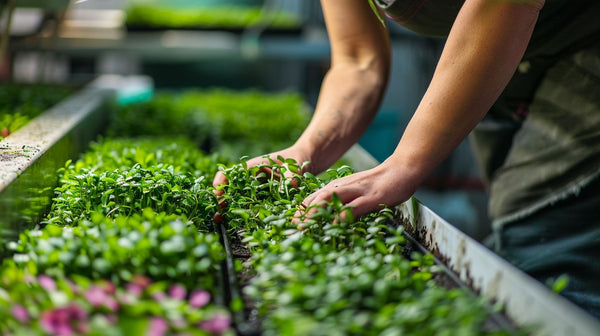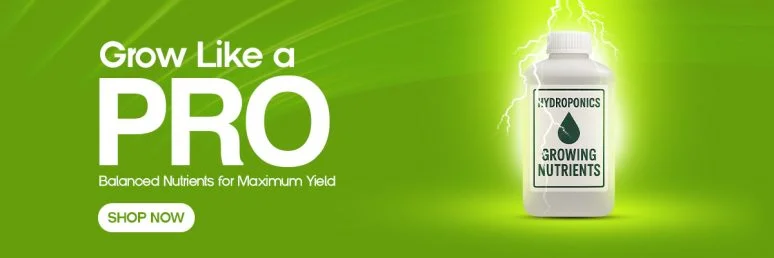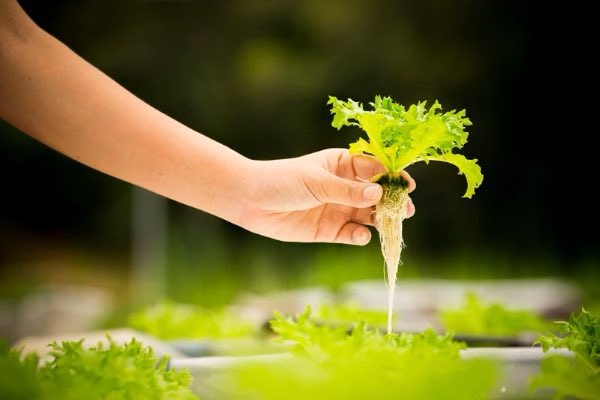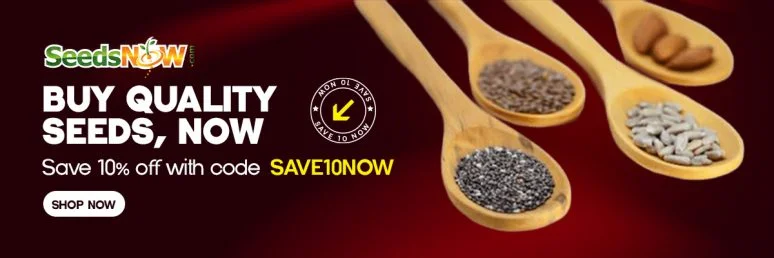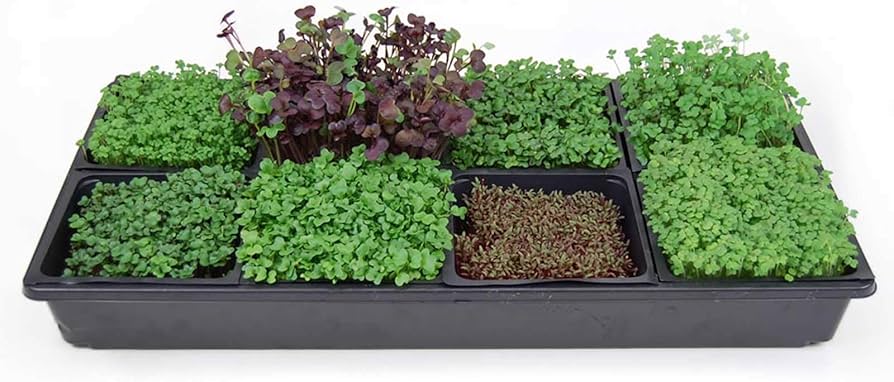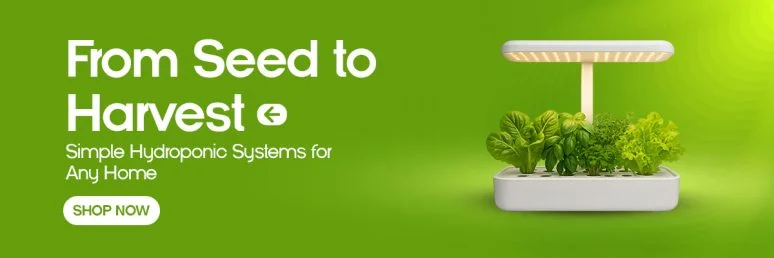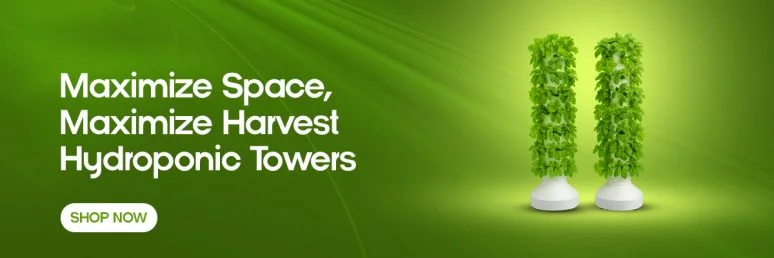Do Microgreens Regrow After Harvest? Every Grower Wants To Know

Key Takeaways
- Most microgreens don’t regrow after harvesting because they lack the necessary growth nodes and energy reserves for regeneration.
- Pea shoots, wheatgrass, sunflower microgreens, and buckwheat are exceptional varieties that can produce a second harvest under the right conditions.
- Proper harvesting techniques, including cutting above the first node and using sharp, clean scissors, significantly improve regrowth potential.
- Second harvests typically yield 50-70% less volume and may have reduced flavor and nutritional content compared to the first harvest.
- Understanding the economics of microgreen regrowth helps determine whether it’s more efficient to start fresh or attempt a second harvest with certain varieties.
You’ve carefully tended your microgreens for days, snipped that perfect first harvest, and now you’re staring at the remaining stems wondering: will they grow back? It’s the question every microgreen enthusiast eventually asks.
The simple truth about microgreen regrowth might surprise you. While most commercial growers treat microgreens as single-harvest crops, there are exceptions and techniques that can help you maximize your growing efforts. As home gardening becomes increasingly popular, understanding the regrowth potential of these nutrient-packed seedlings can save you time, money, and resources.
Urban Leaf has been helping indoor gardeners grow nutritious microgreens for years, and we’ve researched extensively which varieties can actually produce a second harvest. Through careful experimentation and grower feedback, we’ve identified both the possibilities and limitations of microgreen regrowth.
The Truth About Microgreen Regrowth Most Gardeners Don’t Know
“Grow Microgreens Hydroponically” from canadagrowsupplies.com and used with no modifications.
Most microgreens simply don’t regrow after harvest—this is the hard truth many enthusiastic growers must accept. Unlike mature plants that have established root systems and multiple growth points, microgreens are harvested at an extremely early stage of development. This developmental timing is precisely what gives microgreens their intense flavor and nutritional concentration, but it also limits their ability to regenerate after cutting. For those interested in other forms of cultivation, understanding hydroponics can offer alternative solutions.
Many gardening blogs and videos mislead beginners with promises of endless harvests from a single tray. The reality is more nuanced. While some varieties may produce a modest second growth, the quality, quantity, and nutritional value typically diminish significantly. Understanding this limitation upfront helps set realistic expectations for your microgreen growing journey.
Why Most Microgreens Don’t Regrow After Harvest
“Hydroponic Microgreens Year Round …” from www.instructables.com and used with no modifications.
The science behind why most microgreens fail to regrow comes down to a few fundamental biological principles. These tiny plants simply haven’t developed the necessary structures and energy reserves needed for regeneration. For those interested in alternative growing methods, exploring hydroponics might offer some insights into efficient plant cultivation.
The Critical Growth Point Problem
Microgreens lack meristematic tissue at multiple points along their stems. These specialized tissues are growth centers where new cell division occurs, allowing plants to produce new stems, leaves, and flowers. When you harvest microgreens, you’re typically removing all or most of these growth points, leaving the plant with no way to generate new tissue.
Most microgreens are harvested at the cotyledon stage (when only the seed leaves are present) or just as the first true leaves emerge. At this early stage, the plants typically have only one growth point at the top of the stem. Once removed, the plant cannot generate new growth from the remaining stem or roots. For those interested in alternative growing methods, exploring hydroponic seed germination practices might offer new insights into maximizing plant yield.
What Happens to Microgreens After Cutting
After harvesting, the remaining stems and roots of microgreens typically go through a predictable process. Without their photosynthesizing leaves, the plant parts left in the soil can’t produce energy. The root systems, which are still immature, quickly exhaust any remaining stored energy.
Within days of harvesting, most microgreen remnants will begin to yellow and decay. This isn’t a sign of disease or improper care—it’s simply the natural end of the plant’s life cycle once its primary growing point has been removed. The growing medium will soon be filled with decomposing plant material that can potentially harbor mold and fungi, making it unsuitable for continued use without proper treatment.
Rather than fighting against these biological limitations, most experienced growers choose to start fresh with new seeds, taking advantage of the quick 7-14 day growing cycle that makes microgreens so appealing in the first place.
The Energy Reserves Dilemma
Perhaps the biggest obstacle to microgreen regrowth is their limited energy reserves. Unlike mature plants that can store carbohydrates and nutrients in well-developed root systems, microgreens have minimal energy storage capacity. They rely almost entirely on the seed’s original energy stores and what little their tiny leaves can produce through photosynthesis.
When you harvest microgreens, you remove their primary energy-producing organs (the leaves). Without substantial energy reserves in their roots or stems, most varieties simply can’t power new growth. Think of it like trying to start a car with an almost empty gas tank—there simply isn’t enough fuel to get the engine running again. For those interested in alternative growing methods, explore hydroponics explained for potential solutions.
The Few Microgreens That Can Actually Regrow
“Hydroponic Microgreens …” from www.iuemag.com and used with no modifications.
While most microgreens are one-and-done crops, a select few varieties buck the trend and can produce a second harvest. These exceptional plants have specific biological characteristics that allow for regrowth under the right conditions.
1. Pea Shoots: The Regrowth Champion
Pea shoots are the undisputed champions of microgreen regrowth. Their robust nature and growth pattern make them uniquely suited for multiple harvests. Unlike many other microgreens, pea shoots develop multiple nodes along their stems very early in their growth cycle. When harvested properly (leaving at least one node intact), these plants can produce a respectable second and sometimes even third growth.
To maximize pea shoot regrowth, cut approximately 1/2 inch above the soil line, ensuring you leave the first node intact. After harvesting, you’ll typically see new growth emerging within 5-7 days. While the second harvest will be about 60-70% of the original yield, the flavor profile remains remarkably consistent across harvests. For more information on regrowing microgreens, check out this article on microgreens regrowth.
2. Wheatgrass and Its Multiple Harvest Potential
Wheatgrass is another excellent candidate for multiple harvests. Being a true grass, it grows from a crown at the base of the plant, allowing it to regrow after cutting. Many wheatgrass growers routinely get 2-3 harvests from a single planting, though each subsequent cutting generally produces less yield than the previous one.
For optimal regrowth, cut wheatgrass about 1/2 inch above the soil line when it reaches 5-7 inches tall. The second growth will emerge within days and typically reaches harvestable height in about 7-10 days, depending on growing conditions. Keep in mind that by the third harvest, nutrient density typically diminishes significantly, and the grass may develop a more bitter flavor profile. For more information on regrowth, you can explore this guide on microgreens regrowth.
3. Sunflower Microgreens: Limited Second Harvest Possibility
Sunflower microgreens can sometimes produce a second, albeit much smaller, harvest. These popular microgreens develop a strong central stem with distinctive large cotyledons. When harvested carefully above the lowest set of leaves, some plants will attempt to push out new growth from the remaining stem. For those interested in expanding their growing techniques, consider exploring hydroponics systems to optimize your microgreen yields.
The success rate for sunflower regrowth varies widely based on growing conditions, harvesting technique, and seed quality. Even when successful, expect a second harvest that’s only 30-50% of the original yield. The taste of regrown sunflower microgreens also tends to be more bitter and less tender than the first cutting.
4. Buckwheat: When and How It Might Regrow
Buckwheat microgreens occasionally demonstrate regrowth capabilities when harvested at precisely the right stage and with careful technique. These microgreens develop rapidly and must be cut at the optimal time – just as the first true leaves begin to form but before they fully expand. Cutting too early or too late significantly reduces regrowth potential.
When harvesting buckwheat for potential regrowth, leave at least 1/2 inch of stem above the soil line. The second growth will be noticeably smaller and less uniform than the initial harvest. Many growers find that while technically possible, buckwheat regrowth often isn’t worth the additional growing time for the reduced yield.
Proper Harvesting Techniques That Increase Regrowth Chances
How you harvest your microgreens significantly impacts whether they’ll regrow. Even varieties with good regrowth potential can fail if harvested incorrectly. Mastering these techniques can make the difference between seeing new growth or facing disappointment.
The “Cut Above the First Node” Method
The most critical factor in successful microgreen regrowth is preserving the first node – the point on the stem where new leaves can emerge. For most microgreens with regrowth potential, this means cutting approximately 1/2 to 1 inch above the soil line. Look for the lowest set of leaves or a slight thickening in the stem, which often indicates a node. Making your cut just above this point gives the plant the best chance of producing new growth.
Tools That Make a Difference in Regrowth Success
The tools you use to harvest microgreens can significantly impact regrowth success. Sharp, clean scissors or knives make clean cuts that heal quickly and reduce stress on the remaining plant tissue. Dull or dirty cutting tools can crush stems, introduce pathogens, and create ragged wounds that are difficult for the plant to recover from.
For maximum regrowth potential, sanitize your cutting tools before harvesting with a food-safe disinfectant or a solution of one part vinegar to four parts water. This simple step prevents the spread of potential diseases that could inhibit new growth. Additionally, consider investing in specialized microgreen scissors with long, thin blades that allow for precise cuts at exactly the right height.
Timing Your Harvest for Maximum Regrowth Potential
The developmental stage at which you harvest significantly impacts regrowth potential. Harvest too early, and the plants won’t have established enough root structure and energy reserves to support new growth. Wait too long, and the plants may have already allocated most of their resources to the first set of leaves, leaving little energy for regrowth.
For varieties with regrowth potential, the sweet spot typically comes just as the first true leaves begin to develop. At this stage, the plant has established a good root system but hasn’t yet committed all its resources to leaf production. This developmental timing gives your microgreens the best chance of pushing out new growth after the initial harvest. If you’re interested in learning more about plant growth techniques, explore hydroponic seed germination practices for additional insights.
After-Harvest Care to Encourage Regrowth
“Micro Greens & Herbs Indoor Gardening …” from www.amazon.com and used with no modifications.
- Maintain consistent moisture without overwatering
- Provide 12-16 hours of direct light daily
- Keep temperatures between 65-75°F (18-24°C)
- Apply a diluted organic fertilizer once after the first harvest
- Monitor closely for signs of mold or disease
After harvesting microgreens that have regrowth potential, proper care becomes even more critical than during the initial growing phase. The plants are now in a weakened state and require optimal conditions to recover and produce new growth. Think of this period as intensive care for your microgreens – they need extra attention to bounce back successfully.
Immediately after harvesting, give your microgreens a gentle watering to help them recover from the stress of cutting. Avoid overhead watering if possible, as wet stems can promote disease. Instead, water from below or use a fine mist sprayer to avoid disturbing the freshly cut stems. For more insights on microgreen care, you can explore this article on do microgreens regrow.
Check your trays daily for any signs of mold, yellowing, or decay. Remove any affected plants immediately to prevent issues from spreading throughout the tray. Remember that not every plant will successfully regrow, so some loss is normal and expected.
Optimal Watering Practices
Water is the lifeblood of regrowth, but the approach differs significantly from initial growing stages. After harvesting, microgreens require consistent but reduced moisture. Overwatering is the biggest threat to regrowth success, as it can quickly lead to rot and mold in the cut stems. Instead of the regular watering schedule you used during initial growth, switch to lighter, more frequent misting.
Bottom watering becomes particularly valuable for encouraging regrowth. This technique involves adding water to the tray beneath your growing container, allowing the plants to draw up moisture through capillary action. This approach keeps the soil evenly moist while preventing excess moisture around the cut stems. For optimal results, maintain the growing medium at slightly less moisture than during initial growth—damp but not wet to the touch.
Light Requirements for Second Growth
Light becomes even more critical during regrowth phases. Without their initial leaves, the remaining plant parts struggle to photosynthesize efficiently. Provide 12-16 hours of direct light daily, positioning your growing trays to maximize exposure. LED grow lights placed 6-12 inches above the trays work exceptionally well, providing consistent light without excessive heat that could stress the recovering plants.
If you’re growing near a window, rotate your trays daily to ensure even light exposure and prevent the new growth from leaning. The quality of light matters more during regrowth than initial growing—full-spectrum lights with both blue and red wavelengths provide ideal conditions for encouraging new leaf development. Many growers find that increasing light intensity by 10-15% during regrowth phases can compensate for the reduced photosynthetic capacity of the cut plants.
Temperature and Humidity Considerations
Temperature stability becomes paramount for successful regrowth. While microgreens can tolerate a relatively wide temperature range during initial growth, regrowth requires more precise conditions. Maintain ambient temperatures between 65-75°F (18-24°C) with minimal fluctuation. Cooler temperatures slow metabolic processes, extending the regrowth period, while higher temperatures increase stress on already weakened plants.
Humidity management requires careful balance during regrowth phases. The ideal relative humidity range falls between 40-60%—enough moisture in the air to prevent water stress but not so much that it creates conditions favorable for fungal growth. If growing in a particularly dry environment, consider placing a small humidifier near your growing area or using a humidity dome with adjustable vents to maintain these conditions.
Nutrient Support for Weakened Plants
After harvesting, microgreens with regrowth potential benefit from gentle nutrient supplementation. Their root systems, while still immature, have depleted much of the available nutrition in pursuit of their first growth. A single application of highly diluted liquid organic fertilizer after the first harvest can provide the essential elements needed for new growth.
For best results, use a fertilizer with a balanced NPK ratio diluted to quarter-strength of the manufacturer’s recommendation. Apply this solution once, about 2-3 days after harvesting, when the cut stems have had time to heal. Avoid frequent feeding, which can lead to nutrient buildup in the growing medium and potential root burn. Kelp extract can be particularly beneficial during regrowth phases, providing trace minerals and natural growth hormones that stimulate new tissue development.
Is Regrowing Microgreens Worth It? The Economics Breakdown
“11 Hydroponic Grow Mediums for Growing …” from onthegrow.net and used with no modifications.
Understanding the economics of microgreen regrowth helps determine whether the practice makes sense for your situation. The decision ultimately comes down to comparing the resources invested against the yield returned, particularly when considering the reduced output of second harvests. For a broader understanding of sustainable agriculture, you might explore hydroponics explained as an alternative method.
Yield Comparison: First vs. Second Harvest
Second harvests typically yield significantly less than first cuttings—usually between 30-70% of the original harvest, depending on the variety and growing conditions. Pea shoots tend to offer the best secondary yields (around 60-70% of the first cutting), while sunflower microgreens might only provide 30-40% of their original output. This reduced productivity must be weighed against the time and resources invested in maintaining the growing trays for an additional 7-14 days.
When calculating the economics, consider that while you’re waiting for regrowth, you could instead be using that same space to grow a fresh batch of microgreens that would yield 100% rather than the reduced percentage from regrowth. For commercial growers, this calculation often makes regrowth economically unfavorable except for specific high-value varieties like pea shoots.
Microgreen Regrowth Economics at a Glance
First Harvest: 100% yield after 7-14 days
Second Harvest: 30-70% yield after additional 7-14 days
Additional resources required: water, electricity, growing space, monitoring time
Best candidates for economical regrowth: pea shoots, wheatgrass
Least economical for regrowth: most brassicas, amaranth, radish
Quality Differences in Regrown Microgreens
Beyond quantity, quality considerations significantly impact the regrowth equation. Second-harvest microgreens generally have thinner stems, smaller leaves, and less uniform growth patterns. While the flavor profile remains similar in some varieties like pea shoots, others develop increased bitterness or more fibrous texture. The nutritional density—one of the primary reasons for growing microgreens—typically diminishes in second harvests, with studies suggesting up to 30% lower concentrations of beneficial compounds compared to first harvests.
For home growers focused on optimal nutrition and flavor, these quality differences may outweigh the convenience of not replanting. Commercial growers selling to discerning customers must consider whether second-harvest microgreens meet their quality standards, as customers may notice differences in appearance, texture, and taste between first and second-growth products.
Time and Resource Investment Analysis
The hidden costs of microgreen regrowth often come in the form of increased monitoring and maintenance requirements. Second-growth microgreens typically need more attention to prevent disease, require more precise watering, and demand optimal environmental conditions. The labor invested in managing these needs can quickly outweigh the seed cost savings, particularly for varieties with marginal regrowth potential.
Additionally, the growing medium deteriorates with extended use. Root density increases, organic matter begins decomposing, and the ideal structure for microgreen growth gradually diminishes. These factors combine to make regrowth attempts increasingly difficult with each successive harvest, creating diminishing returns that eventually necessitate starting fresh regardless.
Better Alternatives to Regrowing Most Microgreens
Rather than struggling with the limitations of microgreen regrowth, experienced growers have developed more efficient approaches to maximize production and minimize waste. These strategies offer better returns on investment while maintaining the quality standards that make microgreens so desirable.
The most successful microgreen operations focus on streamlining their growing cycles rather than extending them through regrowth. By optimizing each phase of production—from seeding to harvest—growers achieve greater overall yields and quality than what regrowth attempts typically provide. The following approaches represent best practices in the industry for both home and commercial production.
“I’ve found that for most varieties, the time and effort spent trying to coax a second harvest could be better invested in starting fresh crops. The exception is pea shoots—they’re the only microgreen where I consistently find regrowth worthwhile.” – Sarah Johnson, Commercial Microgreen Farmer
Succession Planting Strategies
Succession planting—starting new trays at staggered intervals—creates a continuous harvest cycle that’s far more reliable than depending on regrowth. By starting new trays every 3-4 days, you ensure a steady supply of fresh, peak-quality microgreens without the diminished yields or quality concerns of second harvests. This approach also distributes your workload more evenly throughout the week, preventing the harvest bottlenecks that often occur with single-planting methods.
Recycling Growing Medium Properly
Instead of attempting regrowth in depleted medium, many growers have developed effective methods for recycling their growing substrate. After harvest, the root mat and remaining plant material can be composted, while the growing medium itself can often be sterilized and reused for future plantings. This approach captures the sustainability benefits of regrowth attempts without the accompanying quality and yield penalties.
Optimizing Your Growing Space for Continuous Harvests
Vertical growing systems maximize production within limited space, making regrowth attempts unnecessary for space efficiency. By stacking growing trays vertically with appropriate lighting between levels, even small-space growers can maintain continuous production cycles of fresh microgreens. This approach, combined with succession planting, provides more consistent quality and higher total yields than regrowth-dependent systems.
When to Cut Your Losses and Start Fresh
Recognizing when regrowth attempts aren’t working saves valuable time and resources. If your microgreens haven’t shown visible signs of new growth within 4-5 days after harvest, they’re unlikely to produce a viable second cutting. Similarly, if you notice any yellowing of remaining stems, mold development, or unpleasant odors from the growing medium, it’s time to compost the tray contents and start fresh. Learning to identify these clear indicators prevents wasted effort on trays with minimal regrowth potential. For those interested in alternative growing methods, hydroponics offers a viable option to explore.
Frequently Asked Questions
The most common questions about microgreen regrowth reflect the widespread interest in maximizing harvests while minimizing waste. Understanding these fundamentals helps growers make informed decisions about their approach to microgreen production.
As microgreens continue to gain popularity among both home and commercial growers, questions about their regrowth potential become increasingly common. These frequently asked questions address the most common concerns and misconceptions about harvesting microgreens multiple times.
Many growers, particularly those new to microgreens, hope to maximize their return on investment by extending the productive life of their crops. While this desire is understandable, realistic expectations about regrowth capabilities help avoid disappointment and wasted resources.
The answers provided here reflect both scientific understanding of plant biology and practical experience from commercial microgreen operations. This combination offers the most accurate guidance for growers at all experience levels.
Can microgreens regrow if I leave the roots intact?
Simply leaving roots intact doesn’t guarantee regrowth for most microgreen varieties. The critical factor isn’t the roots but rather the presence of viable growth nodes on the remaining stem. Without these specialized tissues, even perfectly healthy roots can’t generate new shoots or leaves. For varieties with regrowth potential like pea shoots or wheatgrass, the intact roots are certainly necessary but must be accompanied by proper cutting technique that preserves at least one growth node above the soil line.
How many times can pea shoots be harvested before quality declines?
Pea shoots typically produce two viable harvests before quality significantly declines. The first regrowth (second harvest) generally yields about 60-70% of the initial cutting while maintaining similar flavor and texture. If attempting a third harvest, expect considerably reduced yields (30-40% of the first cutting) and noticeably diminished quality—thinner stems, smaller leaves, and less vibrant flavor. For more on maximizing yields, check out our guide on hydroponics explained.
The declining returns occur because each harvest depletes the seed’s stored energy and the plant’s ability to photosynthesize efficiently. By the third cutting, most pea shoots have exhausted their growth potential and cannot produce commercially viable yields. For home growers less concerned with yield efficiency, a third harvest might still provide usable greens for personal consumption. If you’re interested in exploring other plant options, consider learning about the best vegetables for hydroponics that can offer sustainable yields.
Will microgreens that regrow have the same nutritional value?
Regrown microgreens typically contain 10-30% lower concentrations of beneficial nutrients compared to first harvests. This nutritional decline occurs because second-growth leaves develop from significantly reduced energy reserves and less efficient photosynthesis. The plants have already devoted substantial resources to their first growth, leaving fewer building blocks available for producing the dense nutrient profiles that make microgreens so nutritionally valuable. For more information on whether microgreens regrow, you can explore additional resources.
The specific nutrients affected vary by variety, but antioxidants, vitamin C, and carotenoids show the most significant reductions in regrowth. If maximum nutritional density is your primary goal for growing microgreens, first harvests consistently provide superior results.
What’s the fastest way to tell if my microgreens might regrow?
Examine the cut stems 3-4 days after harvest—varieties with regrowth potential will show tiny new leaf buds emerging from nodes along the remaining stem. This visual indicator provides the earliest reliable signal of successful regrowth initiation. If no new growth appears within this timeframe, the chances of meaningful regrowth diminish rapidly, and it’s generally best to compost the tray contents and start fresh.
Can I improve regrowth chances with specific fertilizers?
Gentle fertilization can modestly improve regrowth in varieties with that natural potential, but no fertilizer can overcome the biological limitations of varieties that lack the necessary growth structures. For microgreens with regrowth capability, a single application of diluted liquid seaweed or fish emulsion (at quarter strength) 2-3 days after the first harvest provides beneficial micronutrients that support new growth development. Avoid high-nitrogen fertilizers, which can promote leggy, weak regrowth and increase susceptibility to disease.
Remember that while fertilizers can support existing regrowth potential, they cannot create it where the plant biology doesn’t allow for it. Focus your fertilization efforts on varieties known to regrow, like pea shoots and wheatgrass, rather than attempting to force regrowth in naturally single-harvest varieties.
Understanding the biological limitations and possibilities of microgreen regrowth helps set realistic expectations for your growing operation. For most varieties, the most efficient approach remains starting fresh with new seeds rather than attempting to extend production through regrowth.
For the select varieties that do regrow well, proper harvesting techniques and after-care can significantly improve your success rates. With practice, you’ll develop an intuitive sense of which trays have regrowth potential and which are better recycled into your composting system.
Urban Leaf provides carefully selected microgreen seed varieties, growing supplies, and expert guidance to help you achieve consistent success with both first harvests and regrowth potential.
Hydroponics is a method of growing plants without soil, using nutrient-rich water instead. This innovative approach allows for more efficient use of resources and space, making it ideal for urban farming and areas with poor soil quality. Many people are turning to hydroponics to grow a variety of plants, including fruits and vegetables. For instance, hydroponic cherry tomatoes are becoming increasingly popular due to their ease of growth and delicious taste.
